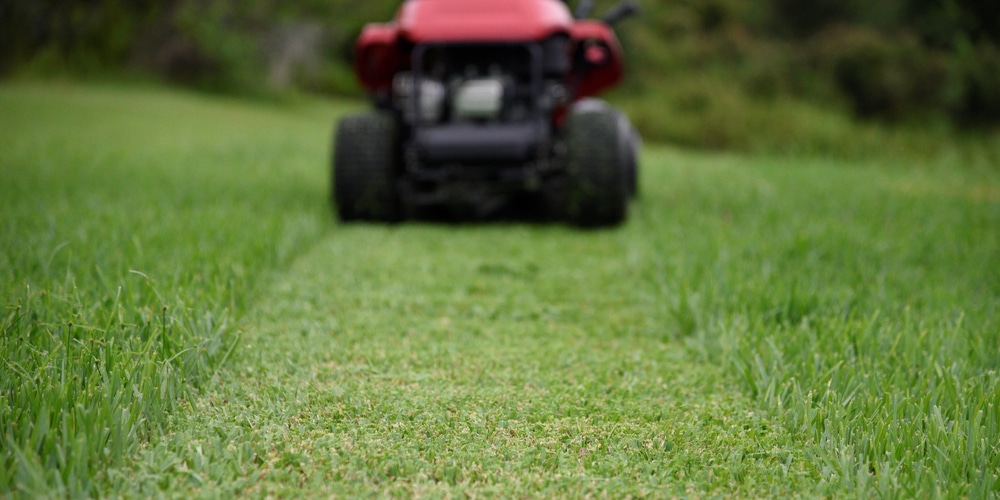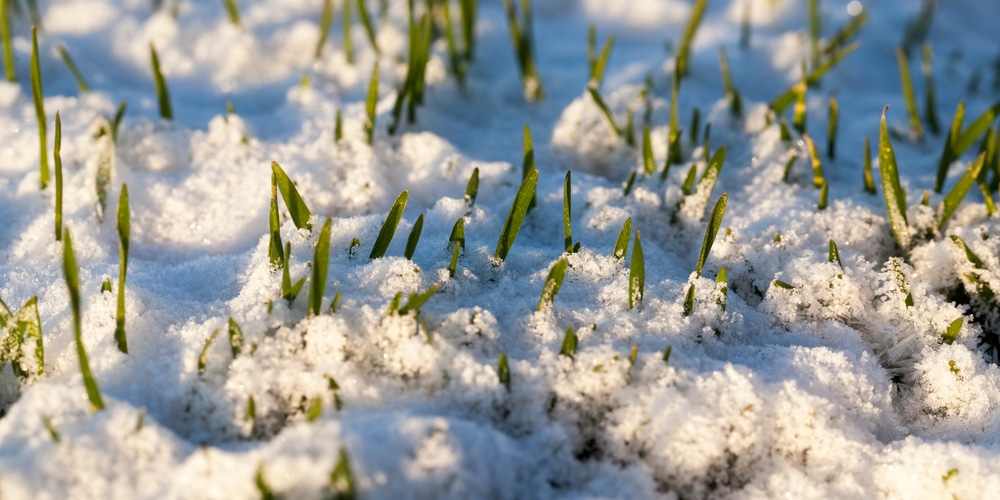The St. Augustine grass is well-known for its thick, dense growth habit that can withstand heavy foot traffic. Characterized by its medium-green to blue-green color, coarse texture, and ability to form a thick mat, St. Augustine grass is a popular choice for lawns in the southern United States.
It has a distinctive V-shaped notch at the tip, making it easy to identify. The leaves are arranged in whorls of three around the stem. While its tough nature makes it resistant to many problems, there are a few things that can cause St. Augustine grass to curl. If you’ve noticed your St. Augustine grass curling, here are a few possible reasons why.
Augustine Grass Curling: What’s the Reason?

Overnight, you may have noticed that your St. Augustine grass has taken on a bit of a wave-like appearance. The blades are no longer lying flat; instead, they’re curling up at the edges. They now look like straw, and the entire lawn looks wilted.
A bit of panic might set in as you wonder what’s causing this and if there’s anything you can do to fix it. Don’t worry; this does happen to grasses most of the time, and there’s usually a simple explanation.
Too Much Moisture
As a warm-season turfgrass, St. Augustine grass thrives in hot, humid climates. It’s not uncommon for it to receive up to an inch of water per day during the summer months. However, too much moisture can be just as detrimental as too little.
When the grass is receiving more water than it needs, the blades will start to curl to protect themselves from the excess moisture. This is especially true if the grass is getting watered more than once a day.
Frost Damage
There are times when the temperature can drop low enough at night that the water in the grass blades freezes. This is most likely to happen in early spring or late fall when there’s still a chance of frost.
When the water in the leaves freezes, it expands and causes the cells to rupture. This results in brown, dried-out patches on your lawn. In severe cases, the entire plant may turn brown and die.
Fortunately, this type of damage is usually only temporary. Once the weather warms up, the grass should start to green up again.
Diseases
While diseases are not a common cause of St. Augustine grass curling, there are a few that can cause this problem. Brown patch is a fungal disease that affects all types of turfgrass.
It’s most likely to occur in the spring or fall when the weather is cool and wet. The symptoms include circular brown patches that are up to several feet in diameter. The grass blades will be rolled up at the edges, and the leaves may have a purple tinge.
Ways to Stop St. Augustine Grass Curling
Once you’ve determined the cause of the curling, you can take steps to fix the problem. If it’s too much moisture, you’ll need to adjust your irrigation system and make sure that water is draining properly in your yard. Otherwise, if it’s frost damage, waiting for better and warmer weather should do the trick.
If diseases are the cause of the curling, treating the root cause is the best way to stop it from happening again. Brown patches, for example, can be treated with fungicides. Be sure to follow the manufacturer’s instructions carefully and apply the fungicide at the first sign of disease.
Final Thoughts
Famous for its blue-green color and coarse texture, St. Augustine grass is a popular choice because they’re relatively resistant to a lot of problems. While it’s not immune to curling, the good news is that there are usually only a few reasons why this happens.
In most cases, you can fix the problem by adjusting your watering habits, waiting for the frost to pass, or treating the underlying disease. The good thing is that it will take more than a little curling to kill this tough grass. So, don’t be too concerned if you see your lawn looking a bit wavy. It should bounce back in no time.
